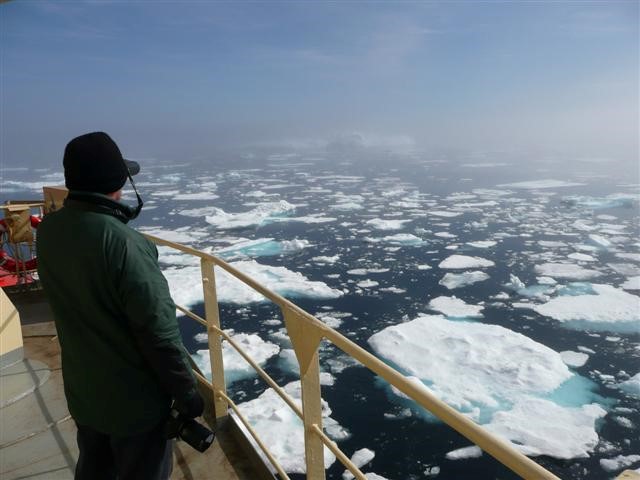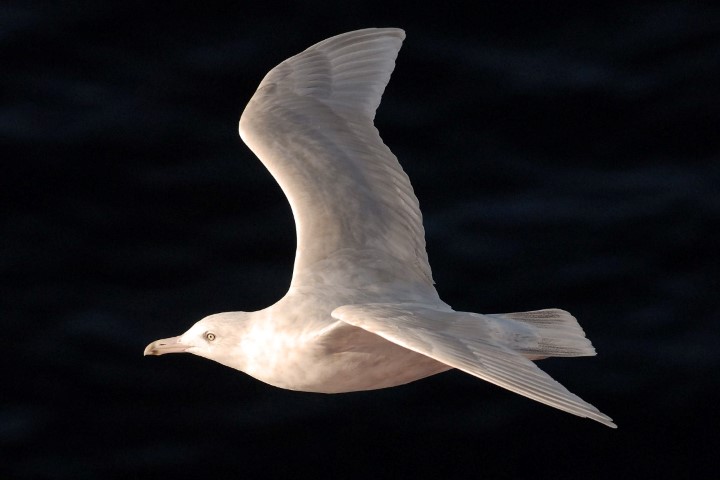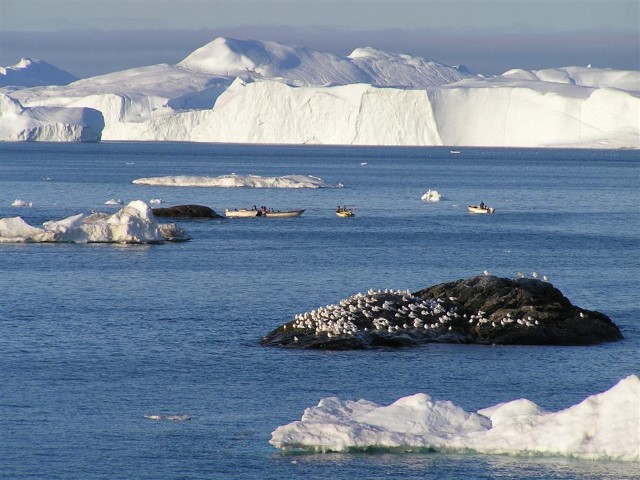
In Greenland, the Bureau of Minerals and Petroleum (BMP) recognize that knowledge of marine mammal and seabird species distribution and abundance is scarce and that these species are also sensitive to offshore industry activities. As a result the BMP have put in place a number of requirements regarding monitoring and mitigation for marine mammal and seabird species. Due to the need for more information surrounding temporal and spatial distribution of marine mammals and seabirds within Greenland waters (particularly for Environmental Impact Assessment (EIA) work, necessary for the management and planning of offshore industry activities), the BMP has made it mandatory for seismic vessels operating in Greenland to collect seabird and marine mammal observation data. The data is collated into databases by the Danish Centre for Environment and Energy (DCE) and is available for future EIA-work by exploration companies that wish to apply to operate in Greenland waters.
 Marine mammal and seabird data are collected by dedicated Marine Mammal and Seabird Observers (MMSOs) that are required on board all seismic vessels operating in the region. MMSOs also carry out mandatory monitoring and mitigation for marine mammals. Marine mammal mitigation for seismic surveys has been compulsory in Greenland waters since 2009. Marine mammal mitigation practices include a power down policy, i.e. if marine mammals enter the mitigation zone airgun firing is immediately reduced, until the animals are known to have moved out of the mitigation zone or sufficient time has passed for them to have done so. During periods of low visibility passive acoustic monitoring is also required. Throughout a whole project, ideally equal effort is provided to marine mammal mitigation and abundance and distribution surveys.
Marine mammal and seabird data are collected by dedicated Marine Mammal and Seabird Observers (MMSOs) that are required on board all seismic vessels operating in the region. MMSOs also carry out mandatory monitoring and mitigation for marine mammals. Marine mammal mitigation for seismic surveys has been compulsory in Greenland waters since 2009. Marine mammal mitigation practices include a power down policy, i.e. if marine mammals enter the mitigation zone airgun firing is immediately reduced, until the animals are known to have moved out of the mitigation zone or sufficient time has passed for them to have done so. During periods of low visibility passive acoustic monitoring is also required. Throughout a whole project, ideally equal effort is provided to marine mammal mitigation and abundance and distribution surveys.
 A key development to marine mammal mitigation in Greenland involves the use of sound exposure modelling. Sound exposure models of the estimated sound levels and ensonified areas during a survey are included in the Environmental Mitigation Assessment and are used to establish mitigation zones. These models are based on actual bathymetry, knowledge of sediment properties and realistic assumptions regarding vertical sound speed profiles and ice cover. All seismic activities in an area must be included in the sound model. Sound source verification studies occur during surveys; these are conducted with autonomous data loggers, or measurements taken from a vessel. These studies produce data on sound speed profiles, depth, salinity and temperature. The BMP also request other proposed mitigation solutions including a reduction of acoustic output, increased directionality of airguns, reduction of high frequency output and careful planning to avoid overlap with breeding or migrating species in the area.
A key development to marine mammal mitigation in Greenland involves the use of sound exposure modelling. Sound exposure models of the estimated sound levels and ensonified areas during a survey are included in the Environmental Mitigation Assessment and are used to establish mitigation zones. These models are based on actual bathymetry, knowledge of sediment properties and realistic assumptions regarding vertical sound speed profiles and ice cover. All seismic activities in an area must be included in the sound model. Sound source verification studies occur during surveys; these are conducted with autonomous data loggers, or measurements taken from a vessel. These studies produce data on sound speed profiles, depth, salinity and temperature. The BMP also request other proposed mitigation solutions including a reduction of acoustic output, increased directionality of airguns, reduction of high frequency output and careful planning to avoid overlap with breeding or migrating species in the area.
Migra
The MMOA hopes that sound source modelling as part of an EIA will become standard for seismic exploration worldwide. It is encouraging to see that the Greenland government recognise that not only mitigation guidelines should be in place to protect marine mammals but also that further information is required to help determine the specific areas where industrial operations may have the potential to be become detrimental to marine mammals.
Photographs courtesy of Terry Cross

